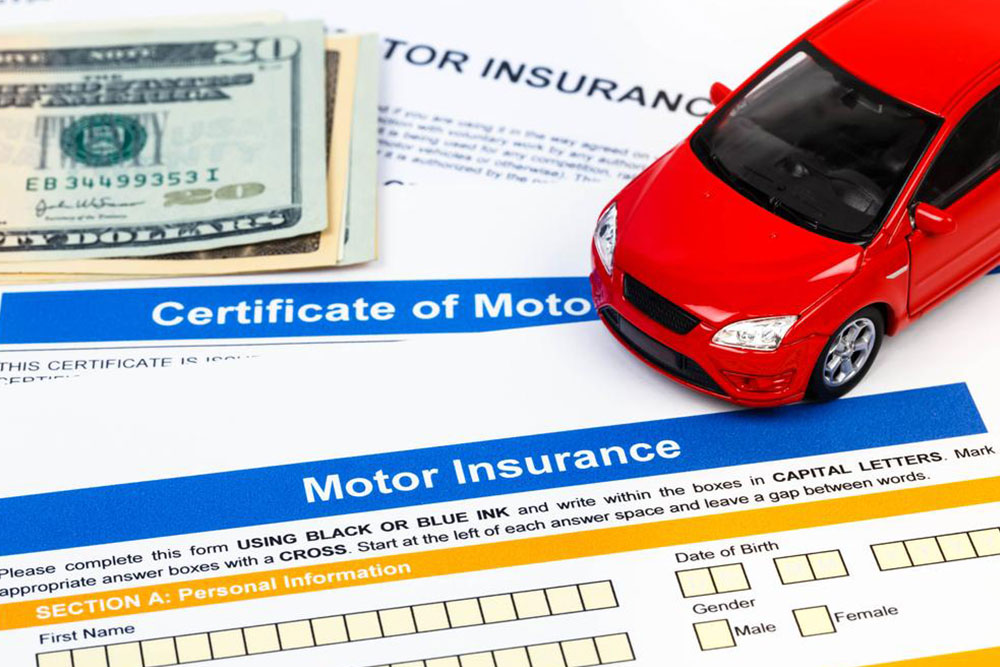Comprehensive Guide to Re-evaluating and Optimizing Your Car Insurance Plans
Learn how to effectively re-evaluate your car insurance options with this comprehensive guide. Discover detailed steps to review your current policy, compare quotes from different providers, negotiate better rates, and optimize your coverage. Stay ahead in the insurance market, save money, and ensure your vehicle is adequately protected by following these expert tips. Perfect for drivers looking to make informed decisions and achieve better value on their auto insurance policies.

Comprehensive Guide to Re-evaluating and Optimizing Your Car Insurance Plans
Car ownership comes with numerous responsibilities, one of which is ensuring that your vehicle is adequately insured. However, many drivers tend to overlook the importance of periodically reviewing their car insurance policies, assuming that once signed, their coverage remains optimal for years. The reality is that car insurance policies are often renewed annually, offering a prime opportunity to re-assess your coverage needs, compare different providers, and potentially save money. Regularly re-evaluating your insurance plans can lead to better coverage, lower premiums, and peace of mind.
Understanding the significance of re-evaluation is essential. Insurance markets are dynamic, with providers frequently adjusting their offerings and premiums based on market conditions, claims data, and customer feedback. Additionally, your personal circumstances, such as a change in driving habits, age, or vehicle condition, can influence the optimal coverage for your needs. Staying proactive ensures that you aren’t overpaying for coverage you no longer need or missing out on better deals available elsewhere.
In this extensive guide, we will explore detailed steps to help you re-assess your car insurance options thoroughly, ensuring you get the most value out of your policy while maintaining sufficient protection. From meticulous policy review to competitor quotes and effective negotiations, these steps are designed to empower you as a smart consumer.
Step 1: Conduct a Deep Dive into Your Current Policy
The first critical step is a detailed review of your existing insurance policy. This involves carefully examining every aspect of your current coverage, including:
Coverage Details: What are the specific coverages included? This may encompass liability, collision, comprehensive, personal injury protection, roadside assistance, and other add-ons.
Premium Cost: How much are you paying annually or semi-annually? Is it within your budget or feeling burdensome?
Exclusions and Limitations: Are there any exclusions or limitations that could affect your coverage during specific events?
Claims History Impact: Have you previously filed claims that could influence your premiums?
Policy Conditions: Are there special conditions, such as age restrictions or vehicle usage clauses?
Understanding these details helps you identify areas where your current policy aligns with your needs and where improvements or changes might be beneficial.
Step 2: Evaluate External Factors Affecting Premiums
Premiums are not static; they fluctuate based on several external factors. For instance, your vehicle’s depreciation can lower its insurable value, potentially reducing premiums. Conversely, recent claims, traffic violations, or a change in driving record can cause rates to increase. Other factors include:
Vehicle Age and Condition: Older vehicles may be cheaper to insure or might require different coverage.
Driving Record: A clean record usually results in lower premiums, while accidents and violations tend to increase costs.
Location: Urban areas with higher traffic congestion pose higher risks, influencing premium rates.
Policy Duration and Payment Options: Choosing full payment or specific policy durations can sometimes impact costs.
By considering these factors, you can better understand how your situation affects your premium and what to expect when shopping for new policies.
Step 3: Obtain Multiple Quotes and Compare Options
The next phase involves actively shopping around. Visit the websites of various insurance providers and use aggregator platforms to get instant quotes. When requesting quotes, ensure that you submit accurate and consistent information about your vehicle, driving history, coverage preferences, and current policy details. This consistency is key to making valid comparisons.
When you receive these quotes, analyze them carefully, paying attention to coverage differences and not just prices. Sometimes, a slightly higher premium might come with substantially better coverage or added benefits that are worth the extra cost. Conversely, lower premiums might mean reduced coverage or higher deductibles, which could jeopardize your protection during unexpected events.
Additionally, contact your existing insurer to see if they are willing to match or beat competitors’ offers. Insurers often strive to retain loyal customers by providing discounts or customized packages designed to meet your current needs. Negotiating with your current provider can save you effort and streamline the process of renewing your policy.
Step 4: Make an Informed Decision and Negotiate
After comparing quotes, it’s time to decide. If your current insurer offers a competitive rate along with satisfactory coverage, renewing is straightforward. Confirm the renewal terms, ensure that there are no unexpected changes, and proceed with the renewal process confidently.
If you find a better deal elsewhere, or if your existing provider cannot match competitors' offers, consider switching to a new insurer. Remember, switching policies often involves canceling your current policy and signing up for a new one, which means additional paperwork and potential coverage gaps if not managed properly.
Before making the switch, verify all policy details, ask about any fees or penalties for cancelation, and ensure that the new policy provides comprehensive coverage suited to your needs. Transitioning smoothly guarantees continuous protection without risks.
Bonus Tips for Maximizing Savings and Coverage
Re-evaluating your policy isn’t just about finding cheaper premiums; it’s also about optimizing coverage. Consider increasing deductibles if you’re confident in your driving and have a financial safety net. Bundling insurance policies (such as home and auto) often yields discounts. Maintaining good credit scores and driving records further improve your premiums.
Furthermore, look into usage-based insurance programs that track your driving habits, rewarding careful drivers with lower rates. Regularly reviewing your policy ensures that your coverage remains aligned with your current circumstances, giving you better financial security and peace of mind.
Conclusion
Re-evaluating your car insurance policies should be a quarterly or annual task. It helps you stay updated about market changes, discover better deals, and ensure your coverage is appropriate for your lifestyle. Don’t hesitate to ask questions, negotiate, and compare options thoroughly—being proactive puts you in control of your financial and personal safety. Remember, a little effort in re-assessment can lead to significant savings and enhanced protection, making your driving experience safer and more affordable.
Stay informed and keep an eye on the latest insurance news by following us for ongoing tips on insurance options, discounts, and industry trends. Your smarter insurance choices start here.




